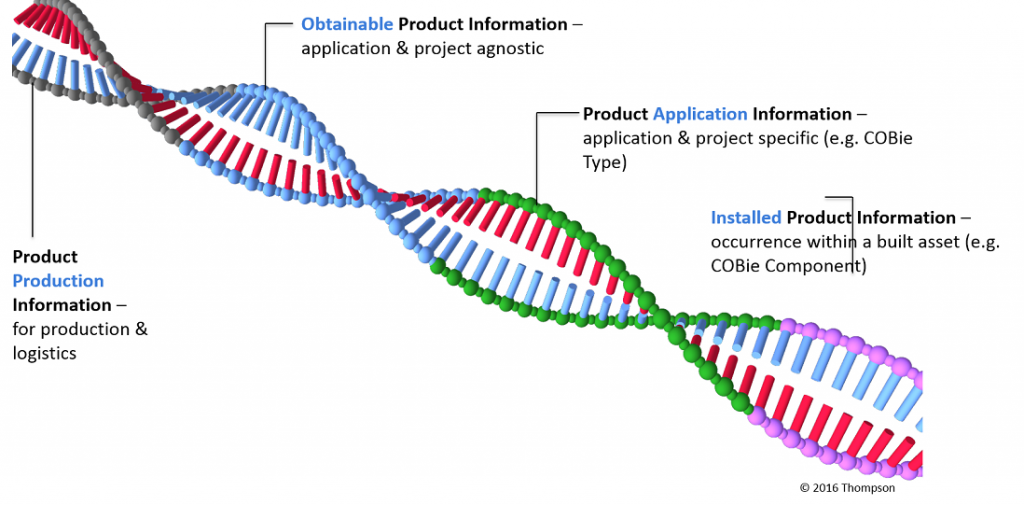Peter Caplehorn, Deputy CE and Policy Director of the CPA believes in the value of digital technologies to create an efficient and modern construction industry. He spoke to BIM Today and outlined the progress made in BIM adoption and consistent product data
In our short interview with Peter Caplehorn, he discusses how manufacturers are embracing BIM, what obstacles they face, and what progress is being made in the drive toward consistent product data.
In 2013 you published ‘BIM for the Terrified’ which provided an understanding of what BIM means. Is the manufacturing sector still terrified of BIM?
I wouldn’t say that manufacturers are terrified. I do think they are engaged, and perhaps concerned because BIM is still in a maturing landscape with a maturing market. With a maturing market, you always have a degree of uncertainty, and I think what everyone is looking forward to now is that we narrow that down. I also believe it’s time for manufacturers to start to take advantage of the well-advertised benefits that are meant to come with the digital agenda.
Is Digital Built Britain helping to focus the construction industry’s mind?
Yes, I think it is a little. I’ve always been an advocate of the need for thought leadership from the government, and that is important in the construction industry with its huge, diverse constituents. Government buy-in is always required to get any major point across. Certainly, the Digital Built Britain initiative identifies very strongly how committed the government are to a digital construction industry.
Digital Built Britain is about pushing the boundaries beyond BIM Level 2, but should we be thinking that far ahead?
There are several steps to first consider before embracing Digital Built Britain in depth. The major focus as far as the Construction Products Association is concerned, and also the focus of many of our members is to consolidate BIM Level 2 so that it becomes business as usual. With the greatest of respect to everybody, I think there’s still quite a long way to go there. There are a lot of areas that need clearer guidance, even though a lot of good work has already been done. We have clearly seen change within the industry, but we are still a long way from making the Digital Built Britain objective happen. I think all of us at the coal face need to focus on that before we even glance at Level 3. It’s essential that everybody focusses on the known situation and facts and supports the core agenda going forward.
The latest report; “The Future for Construction Product Manufacturing” is the culmination of the progress made in digitalising the industry. What would you say are the obstacles that prevent further progress?
The first thing to say is that we are making substantial progress. The main point to make is that we have to have the whole industry working to the same standards, in the same way, and to the same objectives.
What we have always struggled with as an industry is in getting anywhere close to standardisation and digitalisation. We do have pockets that are fully embracing digital working, but there are others that don’t. What we need to see is everybody completely embracing the agenda, and that will happen in a number of different ways. The early adapters have done that because they have seen it’s good for their business, their clients are demanding it, and they see it as a great opportunity. However, it’s clear that market forces have driven some people into that arena, while others are reluctantly following their peers.
To see a joined-up industry requires certain gaps to be filled – especially regarding consistent product data. It’s important that we all adopt the same processes, but it is taking longer than we would like. We have the PAS 1192 family of standards which have been revised to read as a proper family, and we’ve got other supporting standards too, and what people need to do is to get into the mode of using those as the point of reference.
The construction industry also need to use their trade associations or their other affiliations to make sure that whatever they are doing is in agreement with everybody else in their sector. There’s a lot of good work going on with trade associations and other bodies doing exactly that.
Another element to this is that we have the development and maturing of the UK BIM Alliance and they are a really good source of making sure that everybody is working in a common and joined-up fashion. The CPA are a supporter of the UK BIM Alliance and share in the understanding and value of a digitally enabled industry.
Effectively we’ve got the processes identified but what we desperately need is for everything to mature and everybody to be working in the same way. These are the main issues that need to develop.

At what stage are we in achieving consistent product data parameters and templates?
We are almost there! Everybody keeps asking me when LEXiCON will be ready. We’ve been working on the software and supporting data for quite a few months, and we are now very close to a launch of the software and system. Our website will have a new section that is currently in testing which will take people through how this process will work. 70% of our members are already signed up to use it, and we have a lot of interest from the wider industry that are patiently waiting for its arrival.
So how will LEXiCON enable the BIM process for manufacturers?
Put simply; LEXiCON is the software and the process of coordinating all of this information. It’s a world-first and will provide the industry with a plain language dictionary to share product data consistently.
LEXiCON originally grew out of the Product Data Definition document which was published by the CPA and supported by the UK Government’s BIM Task Group in April 2016 which defined a methodology to enable information to be requested and provided in common, plain language terms. So, for manufacturers, this will allow them to create industry- approved templates to share product data which will help to increase collaboration across the supply chain.
How will LEXiCON affect BIM object libraries?
This system sits above them, so what in essence it does, is to provide a common dictionary and a common format for the data so that both are machine readable. It doesn’t conflict with other systems that provide a 3D graphic, but it will support them. BIM object libraries and other systems can still be used, but this is a way of coordinating product information across the whole industry.
Will consistent product data help to feed into COBie?
I believe it will, yes, but whether COBie remains to be a universal process or not is another discussion. We will gather around a common way of expressing the data, so we can have a construction industry that is completely joined-up.
What would your message be to those manufacturers who are yet to embark on ‘BIMifying’ their data?
Digitalisation and BIM is like a tsunami that will wash over the entire industry. If you feel it’s not for you and you can escape, you won’t.
Just cast your mind back to the days before email and imagine what business was like then. If email was removed now how would a business fare? I’m sure it would fail.
BIM is the same as that. It might feel strange and difficult to get to grips with now, but this will be business as usual, very soon, and people will wonder how they managed to do without it. We can say this with certainty by simply looking at other industries in major manufacturing, particularly aviation, and automotive, who have embraced digital working for decades.
Regarding what we can do right now, I would say manufacturers need to understand what their customers want and how they go about delivering it. Then they need to examine what is available and how to organise it from their perspective. Each company will approach it slightly differently, but they should be aware that the whole point should be to use common standards and common ways of doing things so that everybody’s data fits into the same overall formula.
Finally, I would say it’s important to be engaged and to regard this as a change for the good.
 Peter Caplehorn
Peter Caplehorn
Deputy Chief Executive and Policy Director
Construction Products Association
www.constructionproducts.org.uk













